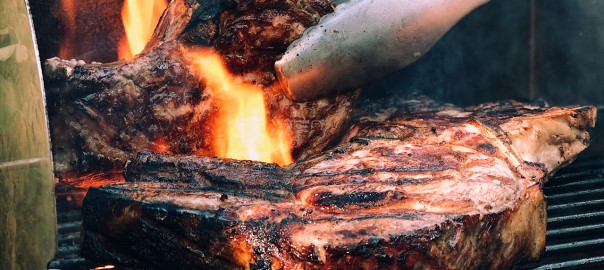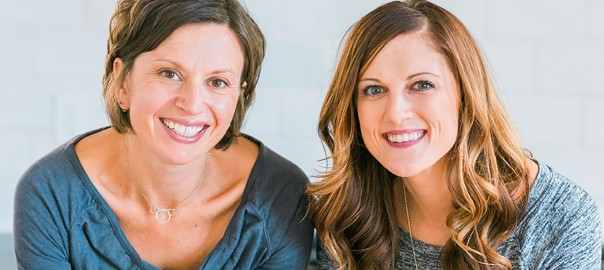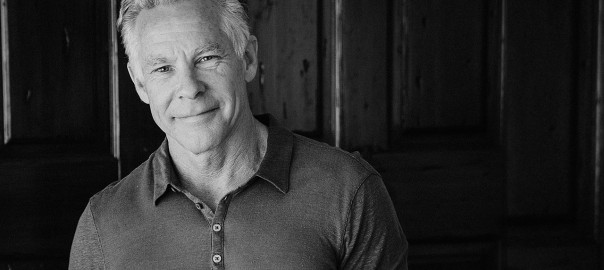Cassy Joy Garcia is a truly inspirational entrepreneur.
Talking with her recently, Cassy’s exuberance and passion for Fed and Fit —the healthy eating and mindset project she founded — and more importantly, life in general, was apparent within moments of starting our discussion.
Cassy has been blogging about living a happy, healthy life since 2011. In her early twenties, the Texas A&M University graduate dealt with consistent joint pain, fatigue, and anxiety. Figuring that a change in her diet, and the type of foods she was eating, might make a difference, she not only started learning about nutrition but began writing about her experiences as well.
Shifting to a grain-free, dairy-free, artificial ingredient-free lifestyle, what she describes as “Paleo before I knew that Paleo was a thing,” Cassy felt better, lost weight, and had more energy. She started writing about her experiences to share what she had learned with family and friends. That has evolved into Fed and Fit, a company built around Cassy’s nutrition and lifestyle advice, recipes, a book, podcasts, and a massive community of like-minded souls.
I’m sure you will thoroughly enjoy our conversation (which happened in the last weeks of Cassy’s pregnancy) and I can only hope that the joy she has for Fed and Fit, and helping others comes through in our talk.
ButcherBox: Cassy, great to chat. Can you tell our readers about how Fed and Fit came to be?
Cassy Joy Garcia: I’m a certified nutrition consultant, but I started my blog before that happened. About eight or nine years ago. I started to try some sort of a Paleo-type diet. I had dieted for years before that with no real success and then started a “real-foods-type” of a protocol. This is kind of before Paleo is the thing it is today, so that’s not what I called it.I just thought that it made a lot of sense nutrition science-wise as far as being anti-inflammatory, and it worked.
After about nine months I wanted to figure out how to turn it from a diet into a real-life solution because I had felt so great for the first time in my life.
Prior to this breakthrough, in my early twenties, I had some joint pain that was pretty debilitating and was always kind of sleepy. But you know, when you live with these sort of chronic conditions you don’t realize that they’re optional. So when those started to clear up is when I really realized that I wanted to keep eating that way, so I started to get creative in the kitchen and came up with different recipes instead of just eating grilled chicken and steamed broccoli every night.
I guess a major milestone came about nine months later when I really realized how far I had come and after eating mostly real foods, eliminating grains, eliminating artificial sweeteners, eliminating all the unhealthy fats, and also incorporating a mixed fitness program that had a lot of strength training in it. I had gone down a grand total of five dress sizes, from about a 10-12 to about a 2-4, but I hadn’t lost really a lot of weight because I built a lot of muscle over that time. My joint pain was gone and I had more energy than ever; I was sleeping better, too. All that wonderful stuff! And I had friends and family who were asking me what I was doing, and what I was eating, and so, the easiest way for me to share that was on a website.
So I started a website and it just blossomed from there. I had folks who started to find the website and ask really great questions as time went on, and so, in order to answer their great questions, I went back to school to get better answers. That’s when I became a nutritional consultant through Bowman College.
From that point, I could work with folks one-on-one. When my docket of clients was full —you know my dance card was essentially too full to take on any more clients — I turned that into an online program, that I called the Fed and Fit project.
BB: Which led to a book, right?
CJG: Eventually, I took the program and combined with about almost 200 new recipes which turned into my first book. Published through Victory Belt, Fed & Fit came out in the fall of 2016. Its got a copy of the program in there, of course.
Things with Fed and Fit just kept growing. The online program is a bit more robust now. Also, I got involved in not just food, but in a larger education piece.
It’s not just about giving somebody a really great casserole recipe, it’s about educating them on why these ingredients are important and why it can really make a big difference to cook from home more often than not.
Now I operate from the standpoint that knowledge is power. I think that when we know better we do better, not only in relation world around us and how to make an impact on folks weight loss goals — because that’s usually what draws people in first — but also in terms of the impact we can have on just the health of the of the earth overall and our pocketbooks long-term when it comes to medical costs. There’s also the impacts we’re having long-term on the health of our family and our loved ones, so I’ve gotten into some more lifestyle coaching with Fed and Fit.
Now we talk about safer skincare ingredients and the sourcing of that. We dive into that a bit more in the podcast. It’s just kind of taken off. We’ve been able to build a very nice small team of nutrition consultants and therapy practitioners at Fed and Fit, and we’re just working to bring good content out.
BB: What was the experience of writing the book like? Was that something you’d thought you’d do for a long time?
CJG: You know it was definitely a goal of mine. I feel like I’m an educator at heart, and I had a lot of things that I wanted to teach.
A book really just made a lot of sense. It was a really good and concise place to write my ideas in one spot. Writing a book definitely became a goal of mine when I realized professionally that Fed and Fit was my path.
What I learned from the process was that it is best not to rush into it. I really took my time with that book, and I probably could have published a book years before, but I decided to wait until I really felt like I was answering a need.
Also, writing a book is a lot of work and takes a lot of patience. But then again, there’s no substitute for really hard work and doing the research and taking your time. Additionally, it was important to make sure I was asking my audience for their thoughts throughout the process. Ask what would serve them well and what kind of information they were looking for.

BB: What has been surprising, looking back, on building a business around the blog posts, the book, the podcasts, and more?
CJG: I think one of the things that I like to tell folks who think that they want to become a full-time blogger is that there are no shortcuts. I think that especially when it comes to starting a program and writing a book and really figuring out how to serve people, you have to be out there. You have to listen to what questions are being asked, and there’s no shortcut for that.
There’s no shortcut for listening to questions that your readers are asking and doing the research, trying to bring them better content, and then, sometimes, going back to the drawing board. Also, when you write constantly, you are in an always in edit/draft/publish mode. I think that that’s really important to understand, that and knowing that you can’t just come out with a program, take an Instagram class, and in turn a blog into a business overnight.
You have to really be serving people and figure out what it is that they’re looking for.
BB: What’s next for you and Fed and Fit?
CJG: That’s a good question. You know, we’re chatting in January, so we have all these new folks enrolled in the Fed and Fit project in January. They’re just some of the most excited and engaged people, and so it’s a lot of fun to work with folks who understand that the point of the project is not to just be another diet.
It’s great to constantly be learning what works for your body and working with people to have those “A-ha” moments when they realize they don’t have to be shackled to a dieting program the rest of their lives. It is really rewarding.
I also really love the lifestyle piece. I’m kind of moving my blog content in a direction that is not just some recipes and some nutrition science facts but more towards how to make good decisions in our everyday life. I like talking more about the products we’re using in our homes to clean, the products we’re using on our bodies, and how we’re making those decisions. We like to present that information in a way that it allows folks to make those decisions for themselves. It’s a really fun riddle to solve.
I’ve always loved getting into the lifestyle stuff in the podcast because that just jives really well with my personality.
BB: How has your pregnancy impacted some of the content and work you are doing with Fed and Fit?
CJG: On a personal note, the pregnancy definitely brings to mind that I’m not just eating these nutrients for me but that I’m eating them for the two of us. So the priority has been on, for example, pastured beef and making sure I’m getting in those organ meats. So that perspective has definitely shifted and solidified in a sense. Even though it’s always been a priority.
I definitely think that Fed and Fit is also going to continue to grow as our family grows in terms of content. It’s a balancing act between the decisions we’re making in the home, and then what we publish on the blog. It has been a pretty fun adventure, but yeah, we will have more baby and family columns coming out in the future.
BB: That’s fantastic, good luck. Shifting a bit, when and how did first learn about grass-fed beef?
CJG: Oh, man, it was so long ago. I really don’t remember where I first learned about it.
I try to tell folks considering where to invest their grocery dollars is that one of the best investments you can make on your grocery bill is in really high-quality proteins and high-quality fats. If you’re looking for a place to really splurge that it would be there because of the benefits of pastured proteins — truly grass-fed and grass-finished proteins.
It can have such a tremendous positive impact on our health when you think about the fats and the absence of hormones and antibiotics that conventional cattle and other livestock are fed. I really try to prioritize those healthy proteins above all.
BB: What differences do you notice between grass-fed v. grain-fed meat?
CJG: I think that as with any industry, someone is going to muddy the waters with marketing, so it’s on us as consumers have to be more and more diligent about making sure we’re getting exactly what we want. When we go to the grocery store, and we pick up something that says grass-fed beef, and it’s cheaper than the other grass-fed beef sitting next to it, you have to realize that there’s a chance that it’s not actually grass-fed, grass-finished.
I think it is important for consumers to also be really vigilant about knowing and doing research on the companies that you are sourcing your products from.
I love ButcherBox because I trust the sourcing process that you guys go through. And I trust you to recommend the best to my readers.
We need to make sure that we’re going with companies that are going the extra mile for us. So while it’s okay to get some of those proteins from the grocery store, it’s better to go through a real-life cow share with somebody or a rancher that you know and trust or a company, like ButcherBox that has gone the extra mile to source those proteins.
BB: What else should we look for from Fed and Fit in 2018?
CJG: So we’ve got some big things coming out this year.
Number one will be a new podcast kind of unrelated to Fed and Fit. We’re going to call it “The Joy Report,” and we’re just going to share what it seems like people are really hungry for: Positivity and good news. We’re gonna share really fun stories that we get from around the world, so, we’ll probably have that coming out sometime this spring.
I am also working on some sort of a casserole business. We want to make it so that folks will be able to actually order a casserole and have it delivered to them.
Lastly, there may be the potential for another book in the works.
BB: Wow, that’s a lot! Cassy, it has been great meeting you and hearing about Fed and Fit. Most importantly, good luck with the soon-to-arrive baby!
CJG: Thank you!
BB: To learn more about Fed and Fit, check out Cassy’s website. Also, you should definitely check out the podcast and the Fed & Fit book.













